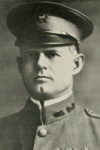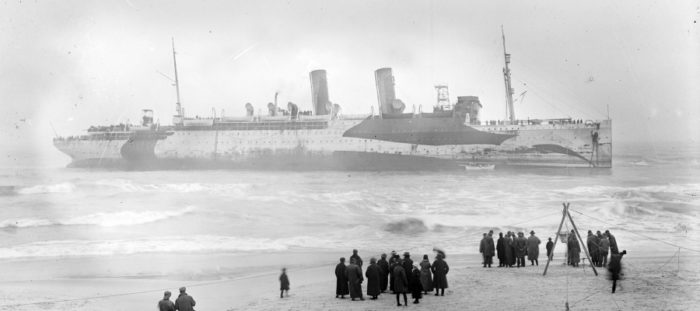 Last week, I looked at the life of Hugh Preston Fiscel, and in particular his service during the First World War. I wrote that he was the only veteran of that conflict of whom I was aware of being buried in Congressional Cemetery. While that statement was true when written, I heard shortly thereafter of five others who had this honor, including two who actually perished in the war. More on these men in the future, but I wanted to look again at Fiscel himself, as I was able to spend some hours at the Library of Congress since I wrote about him.
Last week, I looked at the life of Hugh Preston Fiscel, and in particular his service during the First World War. I wrote that he was the only veteran of that conflict of whom I was aware of being buried in Congressional Cemetery. While that statement was true when written, I heard shortly thereafter of five others who had this honor, including two who actually perished in the war. More on these men in the future, but I wanted to look again at Fiscel himself, as I was able to spend some hours at the Library of Congress since I wrote about him.
Fiscel registered for the draft on June 5, 1917, the day on which all men between the ages of 21 and 30 were to do so according the Selective Service Act of 1917, which had been signed just over two weeks earlier by President Wilson. At the time, he was a farm laborer working for his father in Gettysburg, Pennsylvania.
On February 14 of the following year, Fiscel enlisted in the Army – in other words, he was not drafted. He was assigned to the 20th Engineers, under Col. William Augustus Mitchell (pictured) About six weeks later, Fiscel and the rest of Company B, 9th Battalion, boarded the USS Northern Pacific in Hoboken, NJ for the passage to Brest. Fiscel was 25 years old at the time – and married. He married the 18-year-old May L. Penn some time in the year between his registering and embarkation. Not only that, he had moved to Capitol Hill, to a small house on 6th Street NE, just north of H Street. (The area called “Old City” these days, a term that gives certain ex-patriate cartographers “the vapors”–Maria.)
Fiscel’s time during the war was quiet. It was only after the Armistice that tragedy befell him, in the form of a “compound fracture of the right leg.” This happened eight days after the guns ceased firing. It must have been a fairly severe break, as he was shipped home on March 3, 1919, well before the rest of his company. His destination in the US was Greenhut Hospital, which had been opened at 18th Street and Sixth Avenue in New York City as a debarkation hospital, i.e., a place for injured soldiers to arrive in the U.S. and stay – for no more than ten days – before being sent onwards to hospitals nearer their home.

Curious onlookers watch soldiers being rescued from the USS Northern Pacific after it ran aground off New York on January 1, 1919 (LOC)
The USS Mt. Vernon, the ship on which he traveled had had quite an exciting war. Built as the SS Kronprinzessin Cecilie in Stettin, Germany (Today Szczecin, Poland) she had been interned in Maine at the beginning of hostilities, then turned over to the Army for transport when the US joined the war. After numerous Atlantic crossings, on September 5, 1918, she was struck by a German torpedo, and had to limp back to Brest. She was patched up and by the time repairs were completed, the war was over, and she was put into service returning soldiers from Europe. Fiscel traveled on her first voyage after her repairs.
On April 26, 1919, Hugh Fiscel received an honorable discharge from the army at Camp Meade, Maryland, having spent the last four weeks attached to the 154th Depot Brigade there. It was, however, not the last time he would have interactions with the military. On January 16, 1940, Fiscel applied for money from the Commonwealth of Pennsylvania under their 1934 “Veterans’ Compensation Act.” He was awarded $140 for his 14 months of service.
Two years later, Fiscel found himself registering, once more, for the draft: The 1942 “Old man’s draft.” While the men so registered were not expected to serve, there was some interest in determining which men were available. Like most of those who filled out these cards, Fiscel had no further contact with the military.
